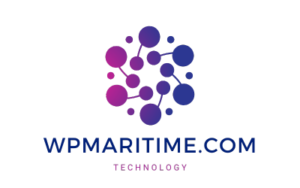Corrective maintenance, also known as reactive maintenance or breakdown maintenance, refers to the maintenance tasks performed to fix or repair equipment after it has broken down or malfunctioned. The goal is to restore the equipment to its normal operating condition after a fault or failure has been identified. Here’s a more detailed breakdown: Definition: Corrective […]
Predictive maintenance is a strategy that uses data analysis and monitoring tools to determine the condition of equipment and predict when maintenance is needed, preventing unplanned downtime and minimizing costs. It’s a data-driven approach that aims to optimize equipment lifespan and performance by scheduling maintenance only when warranted, rather than relying on fixed intervals. Here’s […]
Preventive maintenance is a proactive approach to keeping equipment, machinery, and facilities in good working condition by performing regular inspections, routine tasks, and scheduled repairs. Its primary goal is to prevent equipment failures, minimize downtime, and extend the lifespan of assets. Here’s a more detailed explanation: Proactive Approach: Unlike reactive maintenance, which addresses issues after […]
Autonomous maintenance is a strategy where machine operators are empowered to perform basic maintenance tasks on their equipment, rather than relying solely on dedicated maintenance technicians. This empowers operators to monitor their equipment, make adjustments, and conduct routine upkeep, freeing up maintenance technicians for more complex tasks. Key aspects of autonomous maintenance: Operator Responsibility: Machine […]
“Training of Trainers” (ToT), also known as “Train the Trainer”, refers to a program or model designed to equip individuals with the skills and knowledge needed to effectively deliver training to others. It focuses on developing the trainer’s ability to design, implement, and evaluate training programs, ensuring they can impart knowledge and skills to participants […]
Six Sigma is a data-driven methodology used to improve processes by identifying and eliminating defects. It aims for near-perfect quality, with a goal of 3.4 defects per million opportunities (DPMO). This is achieved through a structured approach like DMAIC (Define, Measure, Analyze, Improve, Control) and the use of statistical tools. Here’s a more detailed explanation: […]
Statistical Process Control (SPC) is a method of monitoring and controlling a process by using statistical techniques to identify and address variations in process performance. It involves collecting data, analyzing it, and then making adjustments to the process to keep it within acceptable limits and minimize defects. Here’s a more detailed explanation: Key aspects of […]
A cleanroom is a controlled environment that filters pollutants like dust, airborne microbes, and aerosol particles to provide the cleanest area possible. Most controlled environments protect the production of products like electronic devices, pharmaceuticals, and medical equipment.
Contamination control refers to the practices and protocols used to prevent, manage, and monitor the introduction and spread of contaminants in a specific area or environment. It’s a comprehensive approach that ensures cleanliness, sterility, and overall quality in various settings, from manufacturing facilities to hospitals. Key aspects of contamination control include: Prevention: Measures to prevent […]
RoHS-compliant solder refers to solder that meets the requirements of the Restriction of Hazardous Substances (RoHS) directive in the European Union. This directive restricts the use of certain hazardous substances in electrical and electronic equipment, including lead, cadmium, mercury, and others. In practice, this often translates to using lead-free solder because lead is one of […]

